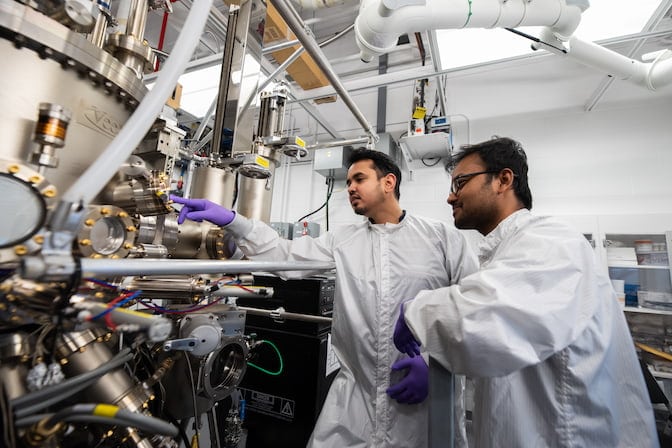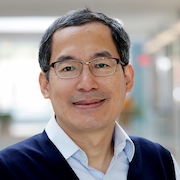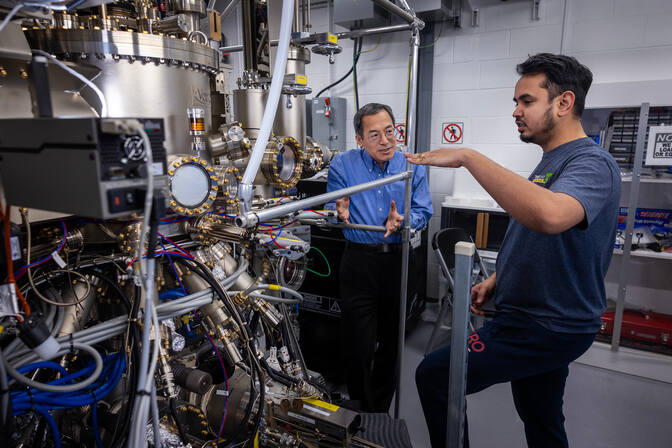
Careful heating unlocks unprecedented sensitivity to pressure in semiconductor materials
A simple and scalable annealing method boosts the quality of materials used in cell phones, sensors and energy harvesting devices.

A simple and scalable annealing method boosts the quality of materials used in cell phones, sensors and energy harvesting devices.
Experts

Pallab K. Bhattacharya Collegiate Professor of Engineering
Professor of Electrical and Computer Engineering and Materials Science and Engineering.
Stronger cell phone signals, more accurate sensors and cleaner energy may be achieved by adding a simple step to the industrial fabrication process of certain semiconductor materials, documented in a recent study led by engineering researchers at the University of Michigan.
Semiconductor materials with the ability to convert mechanical stress to electricity––a property called piezoelectricity––are essential components of technologies we use every day. In cell phones, piezoelectric materials filter the incoming signal from the antenna to reduce unwanted noise. In cars, they deploy the airbag and monitor tire pressure.
“Our team dramatically enhanced the piezoelectric response of a scandium aluminum nitride film, an emerging semiconductor for next-generation microelectronics and photonics, using a fairly simple annealing process,” said Zetian Mi, the Pallab K. Bhattacharya Collegiate Professor of Engineering and corresponding author of the study in Nature Communications.
By heating the film to 700 degrees Celsius for two hours in a specialized chamber, Mi’s team improved the material’s piezoelectricity eight times beyond that used in the current technology on the market.

Enhanced at this scale, piezoelectric materials have the potential to transform technologies across sectors, from aerospace to health care to energy. Increased sensitivity to pressure and vibration could improve sensors that monitor equipment safety and structural health, advance ultrasound procedures and enable traffic lights to be energized by the rumble of trucks along the road.
The researchers also figured out how the heating process boosted the material’s properties, by correcting defects in the thin layers of tiny crystals.
“The piezoelectric response of this material is a contribution from structural ‘grains’ oriented in a particular direction. When the films are just grown, these grains are often not perfectly oriented, with some grains not effectively contributing to the overall piezoelectric response,” said Shubham Mondal, U-M doctoral student in electrical and computer engineering and co-first author of the study.
“The annealing process gives some additional energy to the film, allowing the grains to become better oriented. And that’s partly how their piezoelectric response is increasing,” said Md Mehedi Hasan Tanim, U-M doctoral student in electrical and computer engineering and co-first author of the study.

The team plans to test the annealing process on scandium aluminum nitride grown using methods that yield higher-quality materials, such as molecular beam epitaxy, to see if they can improve the piezoelectric response even further.
In the meantime, Mi said, the material and processing needed for improved piezoelectric performance is virtually identical to the current manufacturing standards. The study’s insights allow industry to dramatically advance the capabilities of their products without major additional costs.
The research is funded by the Defense Advanced Research Projects Agency, as part of a collaboration aiming to use the improved materials to develop a new type of atomic clock, with the University of Florida, the U-M College of Engineering and the Army Research Office.
Researchers from the University of Florida and the Pennsylvania State University also contributed to the study.
The material was processed and characterized in the Lurie Nanofabrication Facility and the Michigan Center for Materials Characterization.
The team has applied for patent protection and is exploring industrial partners to bring the technology to market with the assistance of U-M’s Innovation Partnerships.
Mi is also a professor of electrical and computer engineering and materials science and engineering.
Written by: Mena Davidson, [email protected].